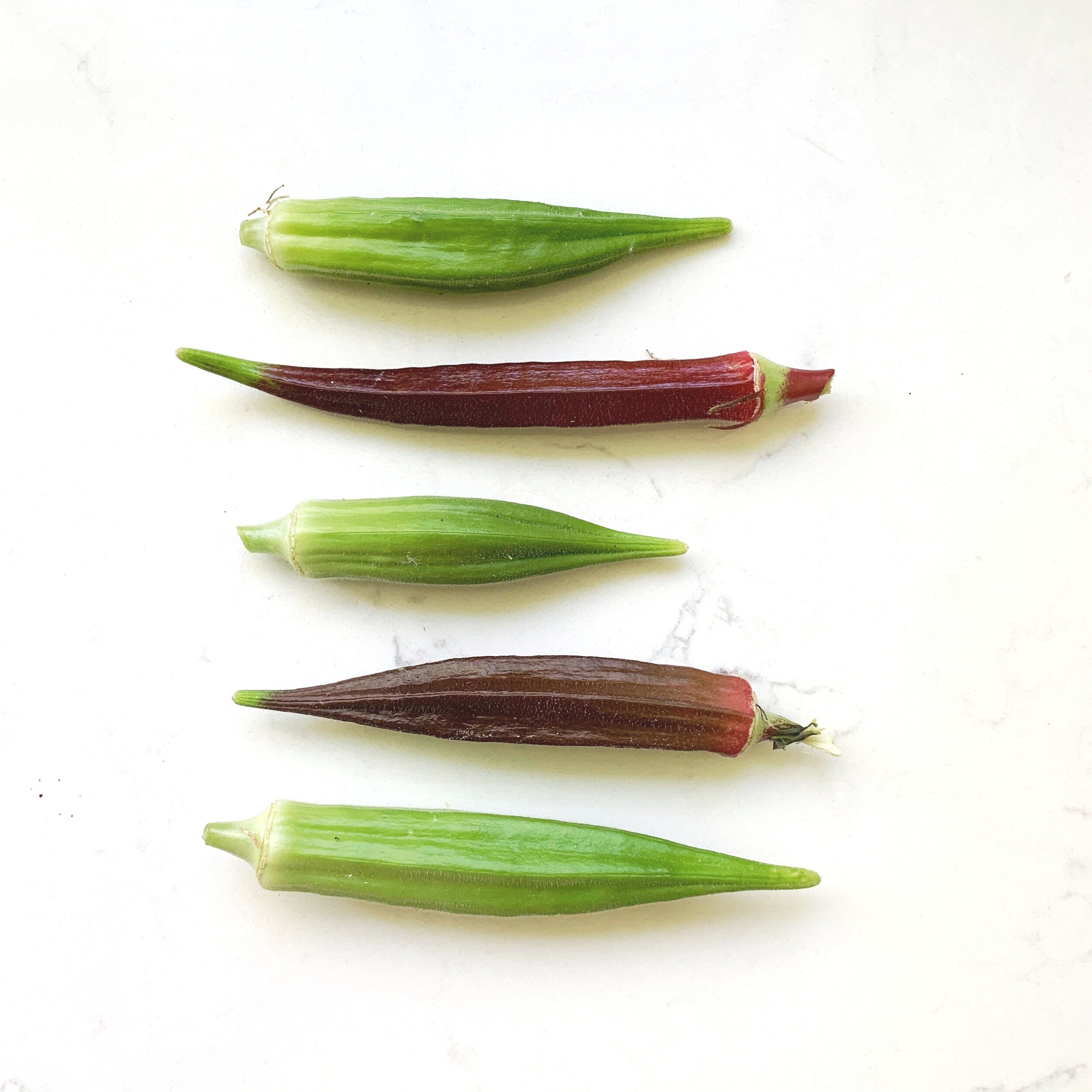As you know, people either love durian, or can’t stand durian. I feel like okra is the same way. A vegetable that divides us between lovers and haters.
Life is too short to be a hater - so I am on a mission to empower us all with recipes that will make us all okra lovers. And let’s be real - when prepared just right, it’s incredibly delicious.
Images of fried okra go hand-in-hand with the southern region of America’s cooking, and there is a reason for it, okra has deep roots in the South. Like so many other southern staples, okra was brought over here by the slave ships, transported across the Atlantic ocean from West Africa.
It thrives in hot, dry areas, and is a member of the cotton family (Malvaceae). The plant itself is beautiful. Large gorgeous palmate leaves. Incredible large yellow flowers with red spots at the base of the petals. There are green varieties as well as red varieties, which have stunning red stems. It can be slow to get started, but once it takes off, it is basically unstoppable. You have to pick every day in order to catch the okra pods at their peak because if left on the plant even two days too long the pods start to become woody and unedible.
I have found that the obstacle that people run into with okra is the slime factor. The pods are highly mucilaginous and it is this feature that makes them so wonderful to thicken soups and stews. However, outside of the realm of soup, this quality can gross highly-sensitive-to-texture people out. I get it—AND, there are ways around this if cooked properly. While deep-fried is usually the go-to cooking method, I would love to introduce some other strategies to offset the plant’s slime potential.
Here are a few tips for cooking okra like a champ:
When you cut okra (or anything at all), make sure that you use a very sharp knife. Slicing smoothly through the pod instead of crushing down through the seeds will reduce the amount of slime that escapes from the cut.
Cut the okra only right before you are going to cook it. Don’t prep this veggie ahead of time… the longer it sits once it has been cut the slimier it is going to be.
Try grilling or pan-roasting the okra! These dry, high-heat cooking methods won’t allow for the slime to leak out.

